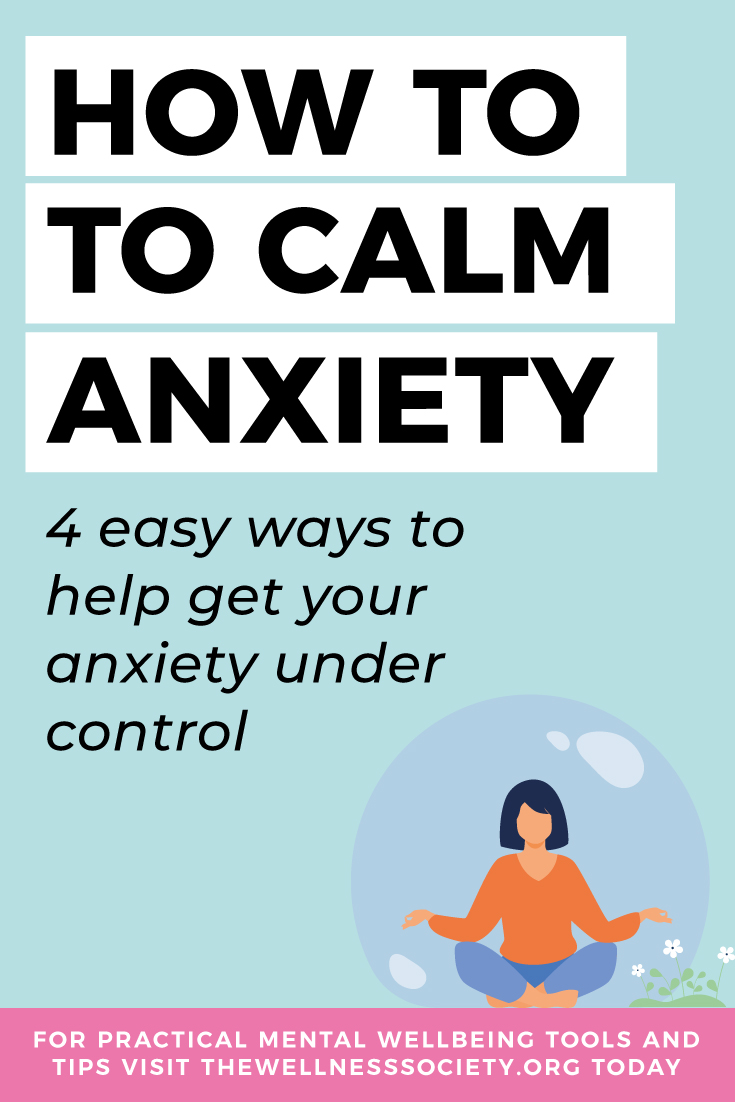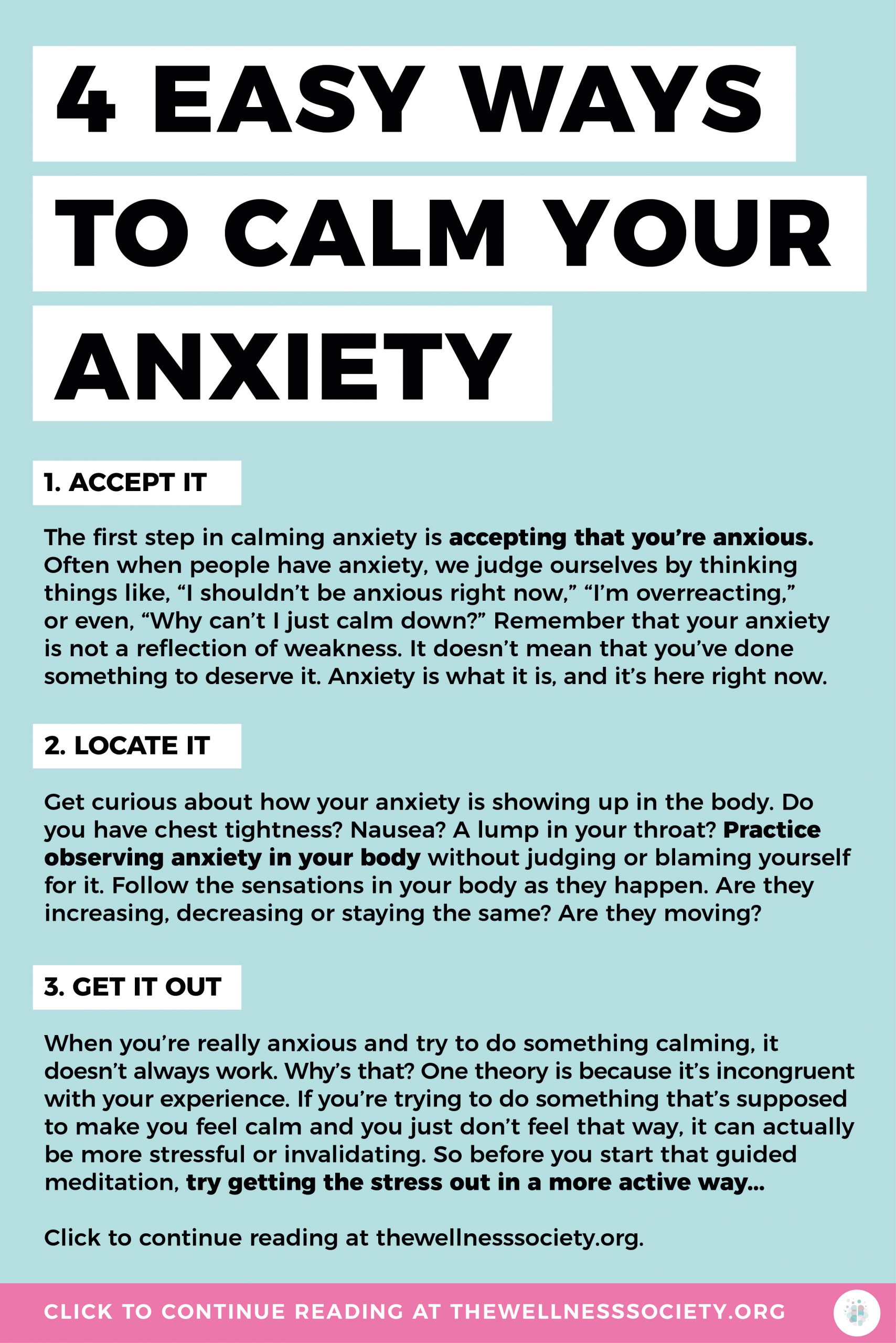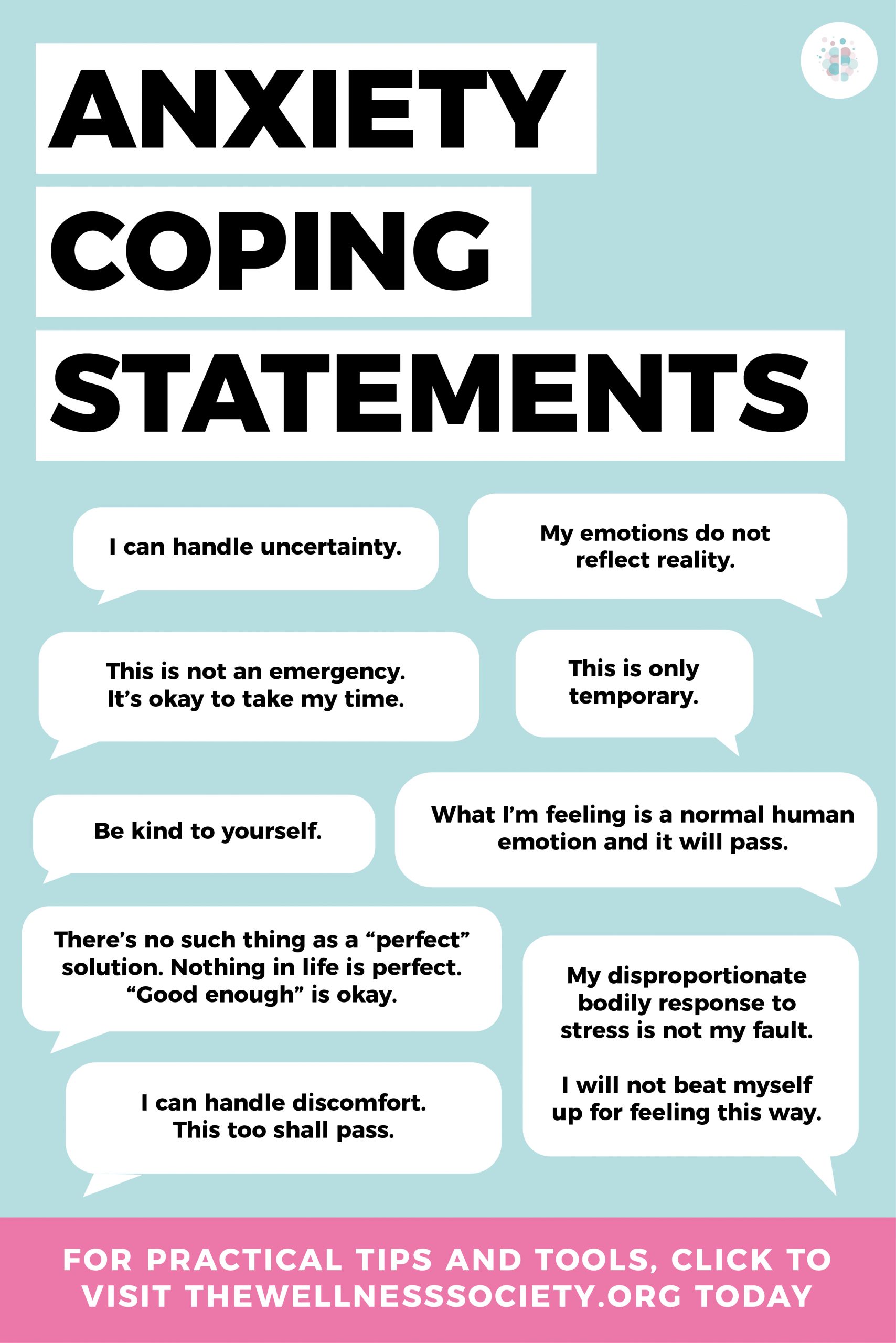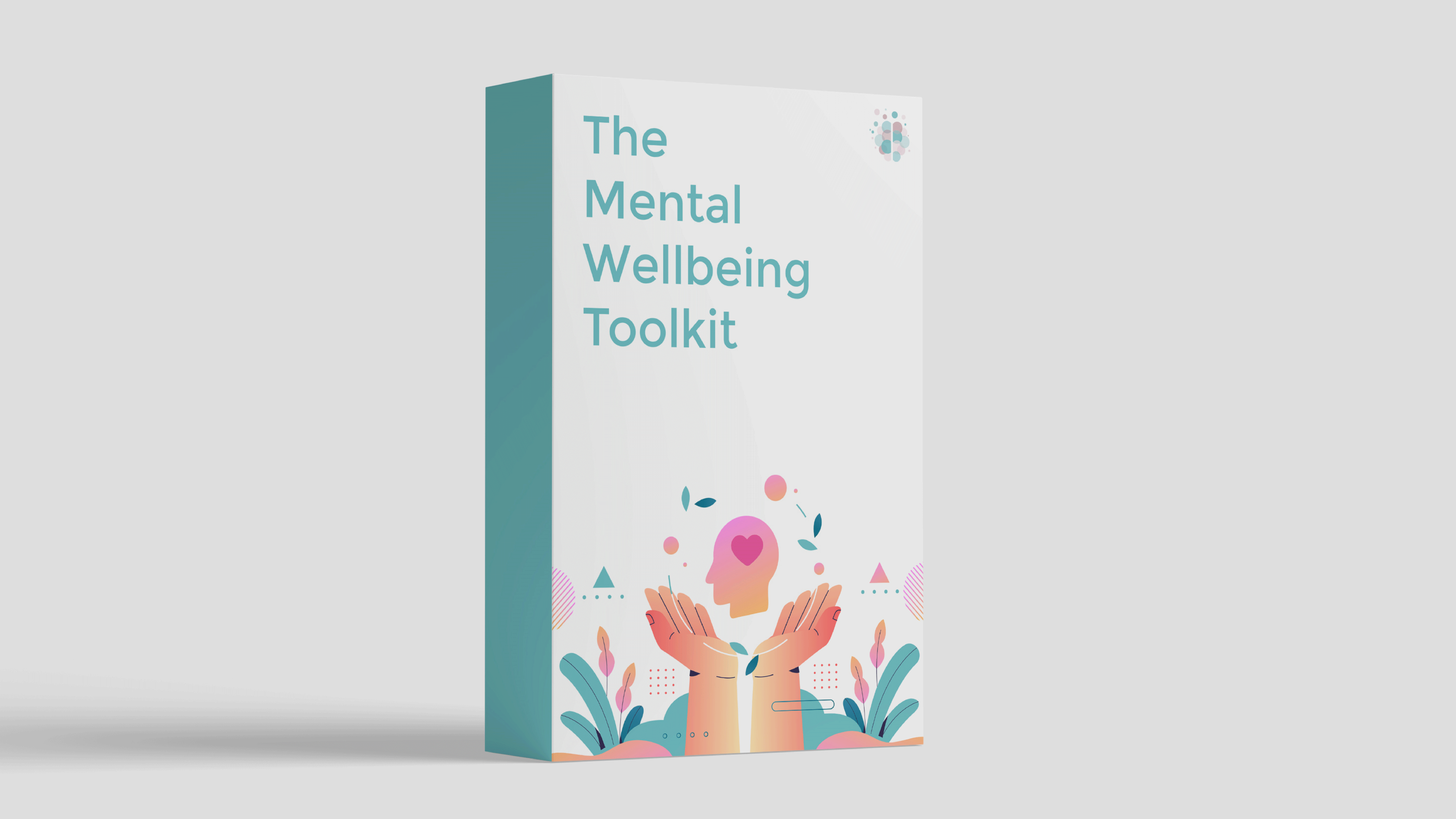Stressed? Nervous? Anxious? Here are four steps to help calm your anxiety.
1. Accept It
The first step in calming anxiety is accepting that you’re anxious. It’s okay to be anxious anytime, and it’s especially understandable right now, in the midst of the cost of living crisis.
Often when people have anxiety, we judge ourselves by thinking things like, “I shouldn’t be anxious right now,” “I’m overreacting,” or even, “Why can’t I just calm down?” Remember that your anxiety is not a reflection of weakness. It doesn’t mean that you’ve done something to deserve it.
Anxiety is what it is, and it’s here right now.
2. Locate It
Get curious about how your anxiety is showing up in the body.
Do you have chest tightness? Nausea? A lump in your throat?
Practice observing anxiety in your body without judging or blaming yourself for it. Follow the sensations in your body as they happen. Are they increasing, decreasing or staying the same? Are they moving?
3. Get it Out
When you’re really anxious and try to do something calming, it doesn’t always work.
Why’s that? One theory is because it’s incongruent with your experience. If you’re trying to do something that’s supposed to make you feel calm and you just don’t feel that way, it can actually be more stressful or invalidating.
So before you start that guided meditation, try getting the stress out in a more active way. Here are some ideas for how to calm anxiety with movement:
- Take a walk, jog, or run around the block
- Do a short workout video
- Use a skipping rope
- Dance
- Clean
4. Soothe It
Now that you’ve gotten the stress out, it’s time to do something soothing.
Try not to put pressure on yourself to feel calm while doing these activities – allow yourself to feel however you feel while doing them.
- Take a warm bath or shower
- Light a scented candle
- Do some breathing exercises
- Do an at home yoga video
- Do some mindful coloring (there’s a free printable book in our Free Tools library)
- Listen to calming music or a guided meditation
- Make yourself a cup of hot tea or milk and drink it mindfully
By using these tips, you’ll learn how to calm anxiety in no time! It gets easier with practice.
Self-Guided Support for Anxiety and Low Mood
Research shows that self-help materials are often enough for people to overcome mild to moderate mental health difficulties without professional support.
If you’re interested in a self-guided program that includes tools from CBT, DBT, ACT and more, be sure to check out The Mental Wellbeing Toolkit. It's "like 10 therapy sessions in one."

About Rebecca
Rebecca Ogle, LCSW, is a Licensed Clinical Social worker and therapist in Chicago, IL.Rebecca provides therapy to people with anxiety, low self-esteem, and people pleasing tendencies. She uses a feminist and social justice lens, and interventions based in CBT, mindfulness, and motivational interviewing.
For helpful, free content, follow her on Instagram or go to her website.
Pin For Later




